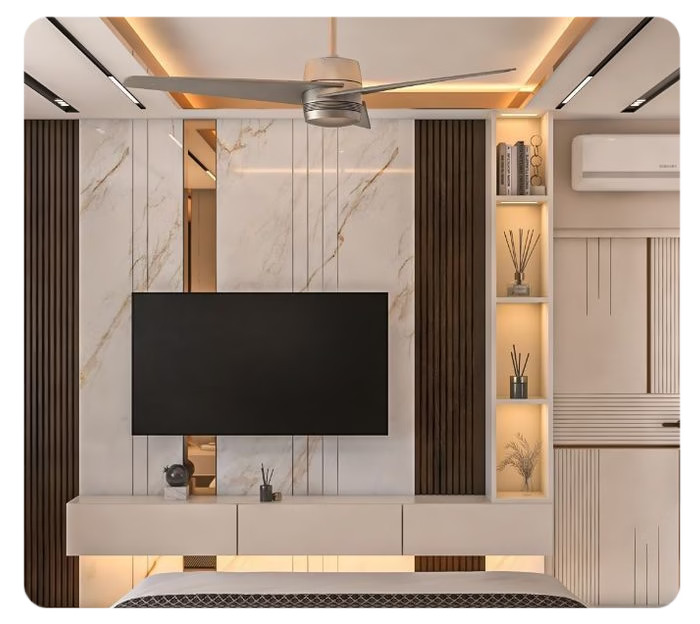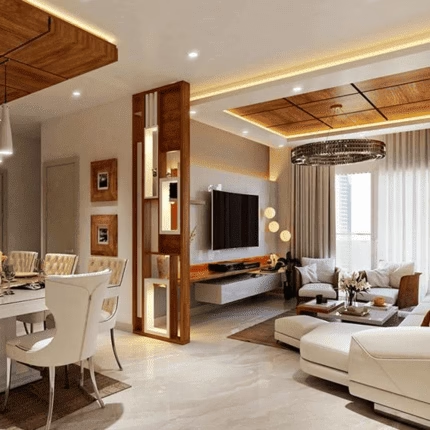In the evolving landscape of interior design, modular TV panels have moved far beyond traditional display units. They now serve as multi-functional features that contribute to the home’s overall spatial narrative. A modular LED TV panels designer must work within aesthetic, structural, and technological parameters while keeping costs optimized. Behind the visual elegance of a finished unit lies a web of design decisions, material choices, and technical detailing, all of which directly affect the final pricing.
Understanding the key cost factors considered by designers helps homeowners plan more realistically and make informed decisions. Whether it’s a compact wall-mounted setup or a statement media wall, budget transparency begins with awareness. In this article, we explore the primary cost components that shape modular LED TV panel projects in 2025.
1. Panel Size and Layout Complexity
The dimensions of the unit and its overall layout complexity are foundational factors in cost determination. A basic flat panel with simple shelving costs significantly less than a multi-level unit with integrated lighting, floating storage, and concealed wiring.
A larger unit with extended side cabinets or a floor-to-ceiling profile requires more raw material, finishing work, and time. A skilled modular LED TV panels designer accounts for both visual balance and spatial scale, aligning the structure with the room’s dimensions2. Material Selection and Finish Grade

Material plays a central role in both cost and durability. Options like MDF, plywood, high-gloss laminates, acrylic panels, PU finishes, and veneer sheets all vary significantly in price. The choice of surface finish — matte, gloss, textured, or fluted — also adds to the final cost.
Designers often coordinate these finishes with other modular elements in the home. For instance, when the same laminate or PU polish is used across TV units and Custom Modular Wardrobe Price Lucknow, bulk ordering reduces waste and improves cost-efficiency. However, opting for premium, fingerprint-resistant or anti-scratch laminates does increase the overall price point.
3. Internal Storage and Hardware Integration
Behind the seamless front of a modular TV panel lies its inner engineering. Cost is significantly influenced by the type and number of hardware components, such as soft-close drawers, telescopic channels, concealed hinges, and hydraulic lifts. These elements not only affect usability but also determine long-term reliability.
A designer will consider how the internal framework supports devices, ventilation, and future expandability. Hardware quality must be balanced against daily usage demands. Cheaper hardware can fail under regular use, resulting in higher maintenance or eventual replacement costs.
4. Concealed Wiring and Electrical Provisioning
Electrical work for a modular LED TV panel isn’t just about a plug point. Designers must plan for cable routing, socket placement, hidden conduit channels, and often integrate lighting systems like LED strips or spotlights. All these enhancements require electrical planning and installation, impacting both material and labor costs.
Projects involving synchronization with smart lighting or speaker systems will naturally require more electrical infrastructure. This complexity mirrors other home zones such as modular kitchen design in Lucknow, where concealed wiring is crucial for seamless appliance integration.
5. Lighting Features and Sensor Technology
Ambient and task lighting are now key components of TV unit design. Designers may incorporate edge-lit LED strips, sensor-controlled backlighting, or programmable lighting scenes that respond to viewing activity. The type, brand, and placement of these fixtures contribute to cost variations.
In high-end designs, lighting can be linked to voice control systems or gesture-based features. These integrations are not only functional but elevate the viewing experience. However, they require precision during installation and higher-grade components, which come at a premium.
6. Custom Add-Ons and Modular Accessories
Homeowners increasingly request additional features such as sliding panel fronts, built-in speakers, bookshelves, display boxes, and floating consoles. Each of these elements adds to the cost, depending on their complexity and material use.
Designers working on a comprehensive modular interior plan often match finishes and forms with existing elements like kitchen cabinets. For instance, when a TV unit echoes the same material used in the Custom Modular Kitchen Price Lucknow, it reflects a cohesive interior narrative, but often requires extra design precision and cost alignment.
7. Labor and Craftsmanship Involved
The quality of execution is directly linked to labor costs. Units that feature detailed joinery, embedded technology, or handcrafted veneer finishes demand higher craftsmanship and longer installation hours. Designers must factor in local labor rates, installation team skill levels, and required quality control procedures.
In cities like Lucknow, the availability of experienced modular carpenters and trained fitters has improved, but premium projects still demand specialists. Firms recognized among the best interior designers in Lucknow often employ certified teams to maintain consistent workmanship, which is reflected in the pricing.
8. Design Customization and Consultation Time
Each design project begins with consultation, space analysis, and digital mockups. The more customized the requirement — whether it’s space optimization, a unique panel texture, or integration with other interiors, the more time is required in the design phase.
Time spent in coordination, 3D modeling, material samples, and client revisions is also part of what designers factor into cost. Units created as part of whole-home plans, such as Best Modular Interior Home Design in Lucknow, often benefit from faster turnaround due to pre-aligned themes across all spaces.
9. Site Accessibility and On-Site Modifications
Sometimes overlooked, the ease of site access plays a role in determining final costs. For example, difficult installation environments — high-rise apartments with narrow lifts, homes under renovation, or limited workspace areas — increase on-site time and handling risks.
If a project requires last-minute adjustments due to wall irregularities or electrical rerouting, additional material and manpower expenses may arise. Designers must include these contingencies in their budget estimates to avoid mid-project delays.
10. Post-Installation Support and Warranty Provisions
Although not directly visible in the product, after-sales service and warranty coverage also influence pricing. A designer or firm offering comprehensive post-installation support, including touch-up services or alignment corrections, will usually incorporate that into the quote.
Warranties on materials, hardware, and finish longevity indicate a commitment to quality and assurance. Professional modular designers, especially those offering integrated solutions across the home, view support as part of their service model.
Conclusion
When planning a modular TV panel, pricing is rarely about one factor alone. It’s a combination of design intent, material decisions, construction precision, and functional upgrades. Every thoughtful modular LED TV panel designer carefully evaluates these cost points to propose solutions that fit both lifestyle and budget without compromising on quality or longevity.







